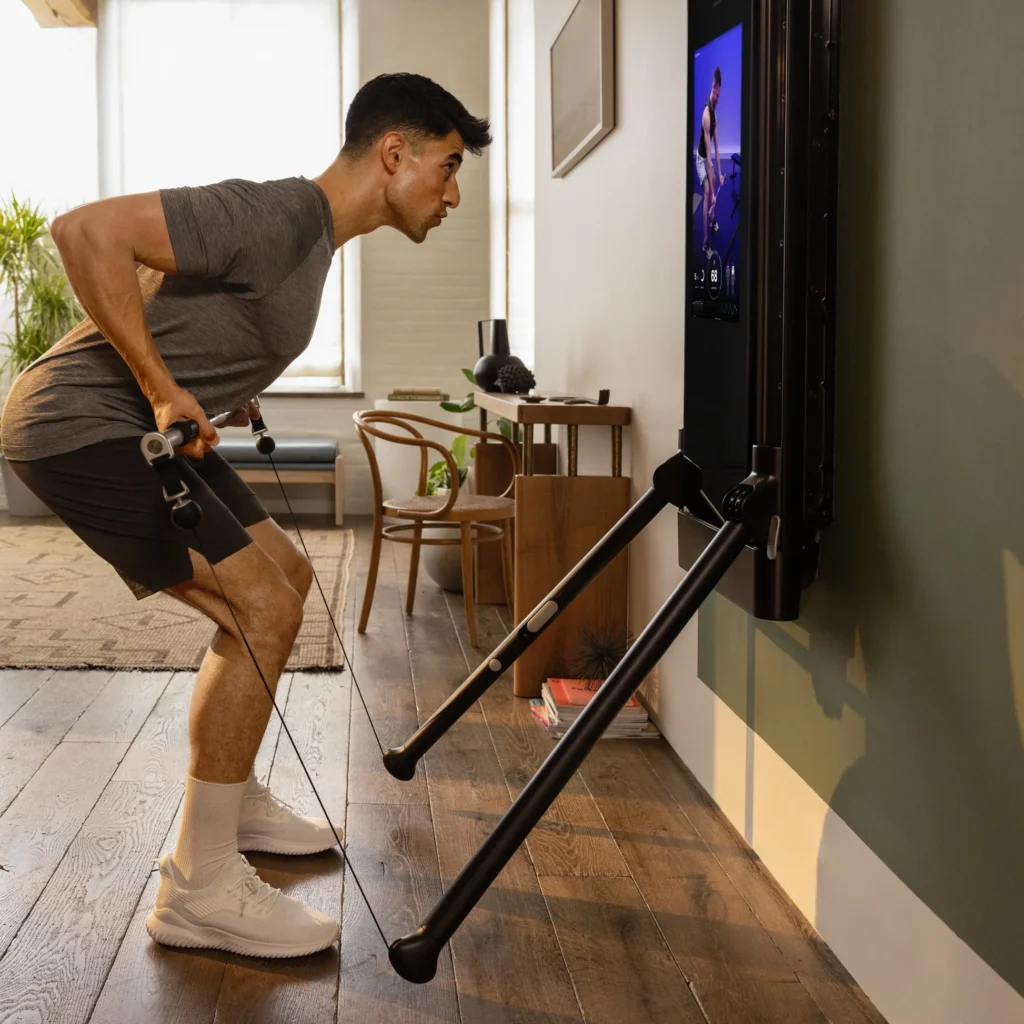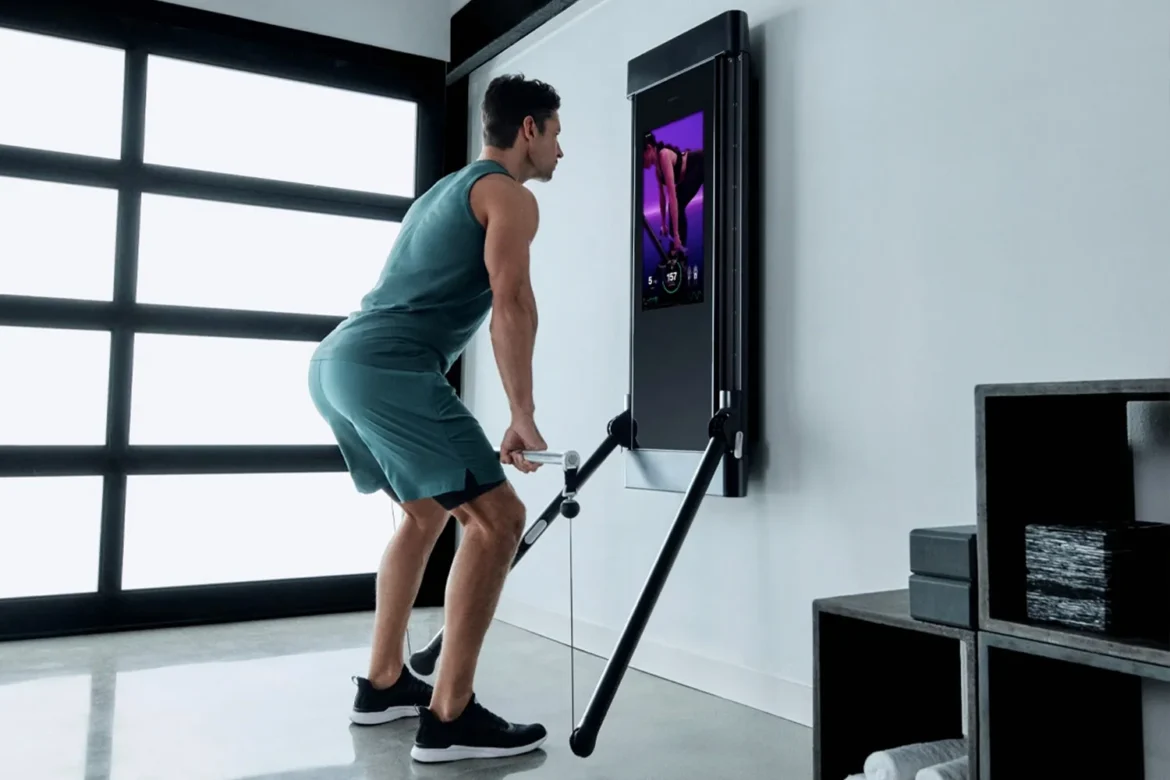The way we approach fitness is evolving rapidly, and at the center of this shift is Tonal, a smart home gym that offers a full-body workout experience using digital weights and artificial intelligence. But does it truly stand up to the experience and variety of a traditional gym? For those looking to invest in long-term fitness, this question matters more than ever. Let’s explore the most meaningful differences between Tonal and the gym to help you decide which route fits your lifestyle and goals.
Equipment and Technology
One of the first things people notice about Tonal is its sleek, wall-mounted design. Instead of racks of weights, Tonal uses digital resistance controlled by advanced AI. The machine automatically adjusts weight as you move through each rep, offering a level of real-time precision that most gym machines or free weights can’t match.
In contrast, gyms offer a wide range of traditional equipment. Free weights, resistance machines, cardio equipment, and specialized tools allow for variety, but they require users to self-manage their workouts. There’s also the need to switch between machines or wait your turn. Tonal simplifies this by keeping everything in one place and guiding you through a program tailored to your strength profile.
Still, some gym-goers prefer the feel of iron or the satisfaction of stacking plates. And for advanced lifters, traditional gyms often offer heavier loads and more advanced tools than Tonal’s current limits. That said, for 95% of users, Tonal provides more than enough range.
Space and Convenience
If there’s one category where Tonal shines, it’s convenience. A traditional gym requires travel time, a change of clothes, sometimes a wait for machines, and often, crowds. Not to mention weather or odd hours can throw off your rhythm.
Tonal is fixed to your wall, takes up minimal space, and offers workouts whenever you’re ready. You can squeeze in a quick 20-minute session before work or a full routine at night without leaving your house. This flexibility means consistency becomes easier.
For people living in small apartments or with busy schedules, Tonal removes the biggest barrier to regular training: time and effort spent getting to the gym. On the flip side, some individuals love the ritual of the gym and thrive in that dedicated fitness environment. If you enjoy being around others who share similar goals, that social aspect might be worth the commute.

Personalization and Coaching
Tonal’s software creates personalized training plans based on your performance. It tracks your reps, range of motion, and fatigue levels to recommend adjustments. Each session is guided by on-screen coaches who give cues in real time. This level of automation is impressive.
In the gym, personalization requires either self-guided effort or hiring a personal trainer. While trainers can adapt to your form in real time and offer human support, they’re not always budget-friendly. And relying on your own memory or a printed plan doesn’t offer the same precision as Tonal’s built-in tracking.
Tonal’s blend of data and guidance makes it especially effective for beginners, those returning to fitness, or anyone who wants to follow a structured plan without the guesswork.
Cost and Value Over Time
Let’s talk about the wallet. Tonal has an upfront cost (typically over $3,000) and requires a monthly subscription for access to its training programs. That sounds steep at first, but it covers all equipment, digital weights, and coaching in one.
A gym membership may seem cheaper monthly, but when you add up fees over years, factor in transportation costs, and include extras like personal training or boutique classes, the gap closes fast. For households where more than one person trains, Tonal becomes even more cost-effective.
However, for those not ready for the initial investment or who only need a basic workout space, a gym membership might make more sense. The choice often comes down to your fitness commitment level.
Motivation and Accountability
Tonal provides built-in progress tracking, achievement milestones, and structured programming. You see your strength score, workout streaks, and receive feedback. This data-driven motivation works for many, especially those who enjoy seeing numbers rise.
Yet some people thrive in a physical gym because of the human element—the friendly competition, the energy in the room, or simply being around others. Personal trainers, group classes, or gym buddies can offer support that a machine can’t fully replicate.
Tonal replaces that with virtual challenges and leaderboards, but whether that keeps you consistent depends on what fuels your motivation.
Which One Is Right for You?
Tonal is best for:
- People with limited space or time
- Those who prefer privacy
- Data-driven users who enjoy feedback
- Beginners or intermediate fitness levels
- Anyone looking for guided strength training
A gym might be better if:
- You enjoy a wide variety of equipment
- Group classes or personal trainers motivate you
- You want heavier lifting options
- You like the social atmosphere
The best solution is one that supports long-term consistency. Some people even choose both: using Tonal during the week and visiting the gym for specialty workouts or classes on weekends. You don’t have to choose just one forever.
Is Tonal a Real Alternative to the Gym?
Yes, for many users, Tonal serves as a solid alternative to the gym. It offers over 200 pounds of digital resistance, intelligent feedback, and strength tracking—all from the comfort of home. However, some gym-goers still prefer the social energy and variety of equipment that physical gyms provide.
Can You Actually Build Muscle with Tonal?
Absolutely. Tonal uses adaptive digital weight that can challenge your muscles in a progressive way. Users report noticeable gains in strength, especially when following structured programs designed by Tonal’s certified coaches. It’s ideal for hypertrophy, functional training, and toning.
Which Is More Effective: Tonal or Traditional Gym?
This depends on your goals. For full-body strength training with convenience and smart data tracking, Tonal is highly effective. Traditional gyms, on the other hand, offer more freedom for powerlifters or advanced athletes who want heavy compound lifts like barbell squats or deadlifts.
Is Tonal Reliable for Weight Training?
Yes, Tonal is engineered with precision. It features spotter mode, eccentric overload, and form feedback to ensure safe and effective strength sessions. Its real-time adjustments based on your progress make it a reliable partner for consistent training.
Can a Home Machine Like Tonal Deliver Real Gym-Level Results?
Surprisingly, yes. While it may not replace the full range of equipment available at a gym, Tonal offers enough resistance and exercise variety to mirror a solid gym routine. For most fitness levels, it delivers impressive results, especially when paired with discipline and good nutrition.
What Types of Exercises Can You Do on Tonal?
Tonal supports a wide range of exercises, including:
- Bench press
- Deadlifts
- Squats
- Bicep curls
- Tricep extensions
- Rows
- Lat pulldowns
- Core movements
It also includes yoga, stretching, and cardio-based classes, offering an all-in-one fitness ecosystem.
Is Tonal Suitable for Beginners?
Yes, Tonal is beginner-friendly. It automatically sets starting weights based on a strength assessment and increases difficulty over time. The guided workouts and built-in safety features make it a safe entry point for those new to resistance training.
Is the Cost of Tonal Justified Compared to Gym Memberships?
Tonal does come with a higher upfront cost—around $3,500 plus a monthly subscription. However, over time, it may be more economical than long-term gym memberships, especially for families or couples. The convenience and personalization also add to its value.
Is Tonal a Good Long-Term Investment?
For committed users, yes. Tonal continues to update its software, add features, and offer fresh content. If you’re looking for a smart, compact machine that grows with your fitness journey, it’s a solid long-term choice.
Should I Choose Tonal or the Gym for Fat Loss?
Both can help you lose fat—what matters is consistency and nutrition. Tonal combines resistance training with HIIT-style workouts and cardio, which are excellent for fat-burning. If you prefer working out alone and saving travel time, Tonal is the better choice.
Does Tonal Offer a Personal Trainer Experience?
Yes, Tonal’s AI and certified instructors mimic a personal training experience. It adjusts your weights, monitors form, and encourages progress—something most home machines don’t offer. It’s not human, but it’s close.
Is Tonal Safe and Effective for Women?
Definitely. Tonal’s programs cater to all fitness levels and goals, including strength, toning, and pre/postnatal fitness. Its digital weight allows for fine-tuned control, making it safer than free weights in some scenarios.
Is Gym Motivation Better, or Is Tonal More Practical?
Gyms offer atmosphere and energy that some people need. But Tonal wins in practicality. No commute, no waiting for machines, and no distractions. If motivation is a problem, Tonal’s structured programs and achievements help keep users on track.
| Tonal or Gym | Tonal |
|---|---|
| Training Type | Strength & Resistance |
| Key Feature | Digital Weight System |
| Setup | Wall-mounted at Home |
| User Level | Beginner to Advanced |
| Space Needed | Minimal |
| Equipment Variety | Limited but Efficient |
| Custom Programs | Yes, AI-driven |
| Progress Tracking | Smart Metrics & Feedback |
| Personal Trainer | Virtual Coaching |
| Monthly Cost | ~$60/month (after purchase) |
| Initial Investment | High (~$3,500) |
| Best For | Home users seeking structure |
| Internet Required | Yes |
Final Thoughts
Fitness isn’t one-size-fits-all. What matters most is building a routine you can stick to. Tonal is more than just a fancy machine; it’s a reflection of how technology is reshaping wellness. For some, it’s the future. For others, the gym still offers irreplaceable value.
No matter which path you choose, what truly matters is moving your body, tracking your progress, and staying committed. Tonal and gyms both offer that opportunity—just in different ways.
FAQs
Is Tonal good for beginners?
Yes. Tonal is beginner-friendly with guided workouts, adaptive weight suggestions, and safety features that make it easy to get started without previous gym experience.
Can Tonal replace the gym completely?
For many people, yes. Tonal covers full-body training, progression, and guidance. However, if you’re into powerlifting or group cardio classes, you may still want access to a traditional gym.
What happens if I stop the Tonal subscription?
Without the subscription, you lose access to guided workouts, tracking, and coaching content. The machine still works, but only in a very limited manual mode.
Is Tonal enough for serious muscle gain?
Tonal supports up to 200 lbs of resistance, which is enough for most users. While elite bodybuilders may need more, Tonal is highly effective for muscle growth, especially with consistency.
Are there any hidden costs with Tonal?
Besides the upfront equipment cost and monthly subscription, there may be charges for professional installation. You may also need accessories like a bench or mat, which Tonal often sells separately.
